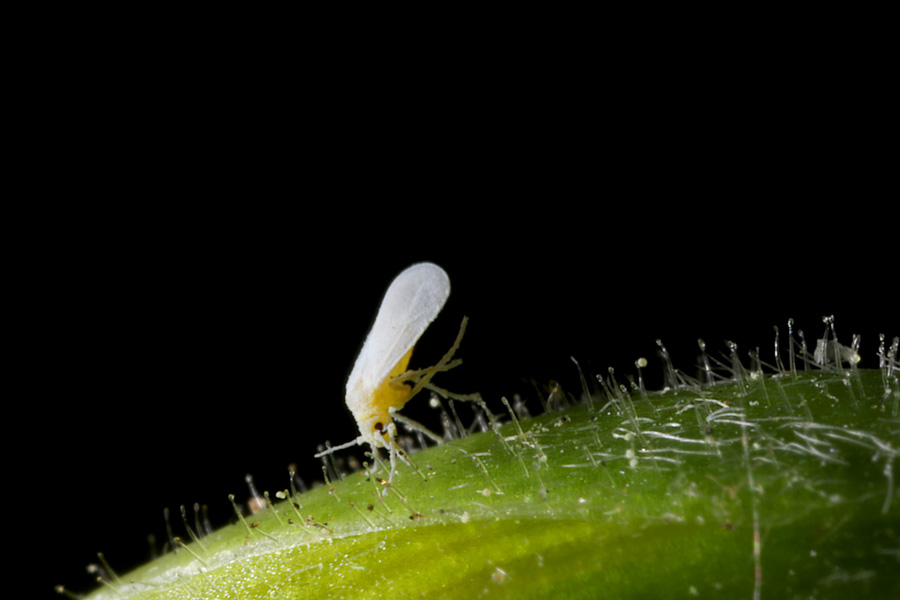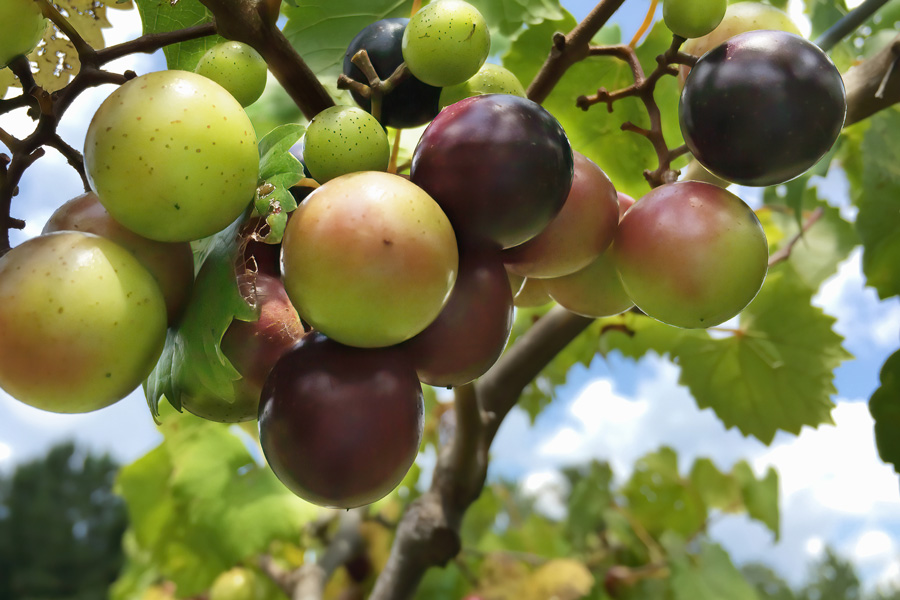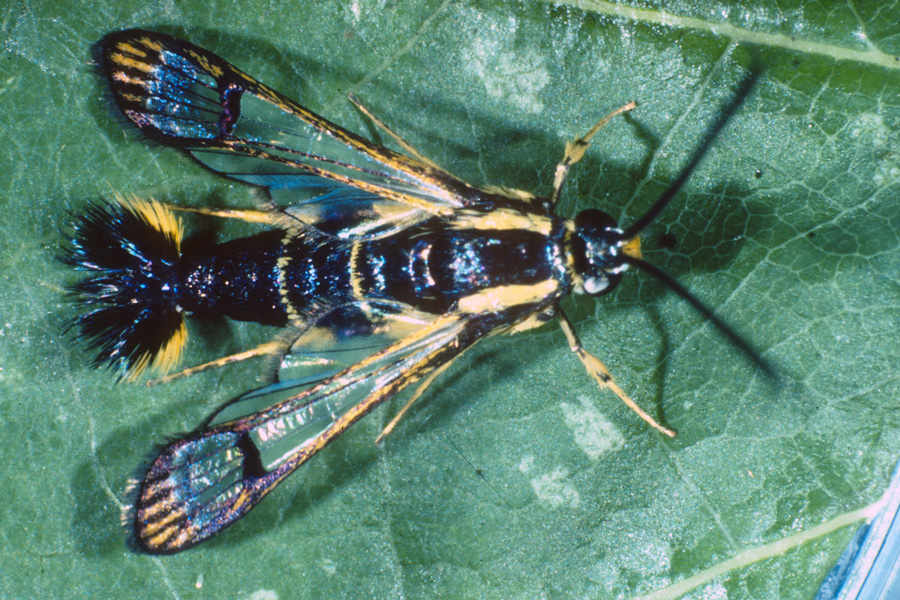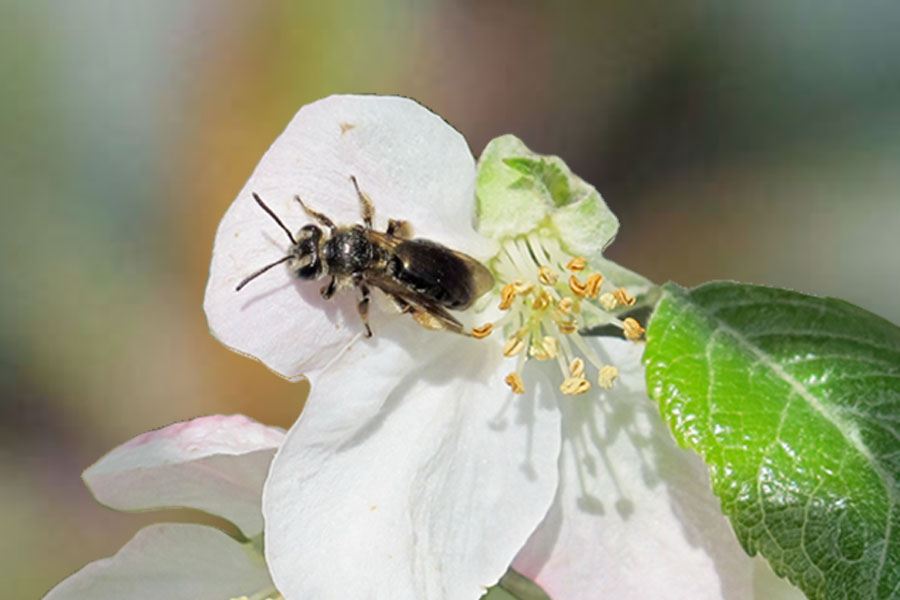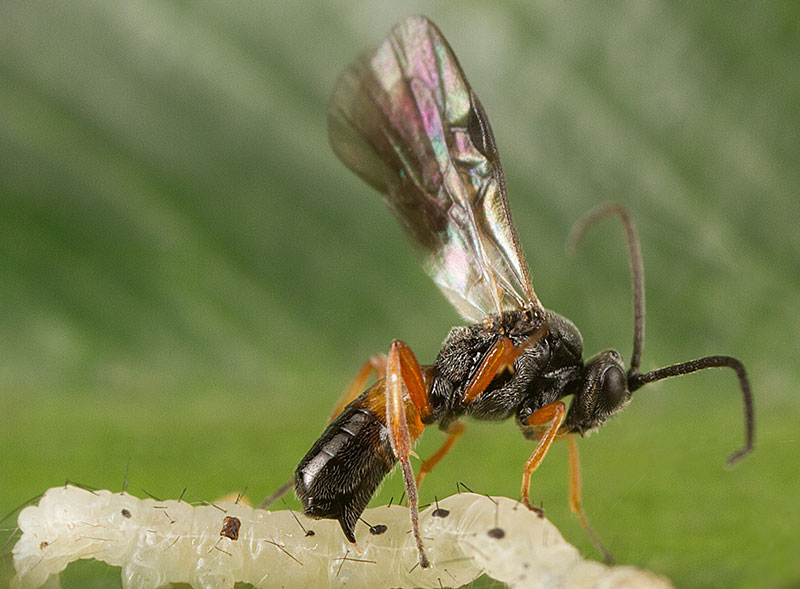The silverleaf whitefly, also known as the sweet potato whitefly or Bemisia tabaci (Hemiptera: Aleyrodidae; Figure 1), attacks a wide range of plants, from ornamentals to warm-season vegetables. Whiteflies are active from mid-July to mid-October and are found gathered together on the underside of leaves during the daytime (Figure 2). Although 76 whitefly species are known to exist in the Southeastern U.S., only a few species cause serious problems in greenhouses and nurseries. These species include the greenhouse whitefly (Trialeurodes vaporariorum), banded wing whitefly (Trialeurodes abutiloneus), giant whitefly (Aleurodicus dugesii), citrus whitefly (Dialeurodes citri), cloudywinged whitefly (Dialeurodes citrifolii), and the silverleaf or sweet potato whitefly. Among several whitefly species, the silverleaf whitefly, particularly biotype B (Figure 3), is the most common and most destructive whitefly species in nurseries in the Southeastern U.S.

Figure 1. Adult silverleaf whiteflies, also known as sweet potato whiteflies.
Photo: Central Science Laboratory, Harpenden, British Crown, Bugwood.org

Figure 2. Adult silverleaf whitefly infestation on the underside of a tobacco leaf.
Photo: Clemson University – USDA Cooperative Extension Slide Series, Bugwood.org
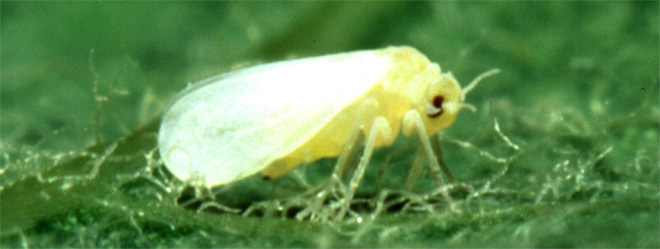
Figure 3. Adult silverleaf whitefly (Bemisia argentifolii or Bemisia tabaci biotype B)
Photo: Scott Bauer, USDA Agricultural Research Service, Bugwood.org
Biology and Damage
Silverleaf whitefly adults have a whitish waxy coating covering their body and four wings, and are approximately 0.8 mm (male) to 1.2 mm (female) long. The silverleaf whitefly is yellowish-white and smaller than other whitefly species, including the giant whitefly, greenhouse whitefly, and banded wing whitefly. Their life stages are egg, nymph, pupa, and adult.
Unlike all other whitefly species, silverleaf whiteflies do not lay eggs in a circular pattern. Females instead deposit between 50 (in cold conditions) and 400 (in warmer conditions) yellow-colored eggs on the undersides of leaves (Figure 4). The eggs remain partially embedded in the surface of the leaves, and turn from yellow to purplish-brown just before hatching. Eggs hatch into flattened nymphs after 4 to 12 days, depending on the temperature.
Figure 4. Eggs of the silverleaf (or sweet potato) whitefly.
Photo: David Riley, University of Georgia, Bugwood.org
The first-instar nymphs have six functional legs and antennae and are referred to as crawlers. Once the crawlers find feeding sites on host leaves, they settle down and insert their mouthparts to consume plant juice. They lose their legs and antennae after molting into secondinstar nymphs (Figure 5).
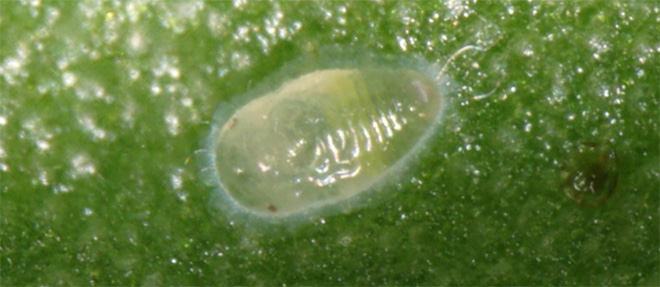
Figure 5. Nymph of silverleaf whitefly.
Photo: Charles Olsen, USDA APHIS PPQ, Bugwood.org
The later nymphal stages remain on the feeding site for the rest of their development. They undergo four nymphal stages; the last stage is referred to as a pupa. This stage of development is distinguished by visible red eyes (Figure 6). Whitefly adults emerge from the pupal stage and live approximately 1 month. The silverleaf whitefly can complete a life cycle within 16 to 31 days.
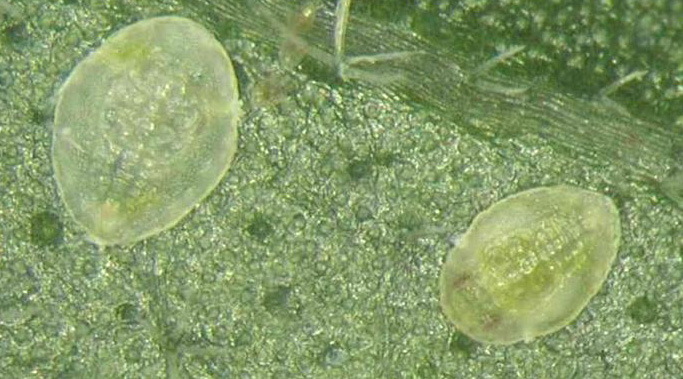
Figure 6. Pupae of silverleaf whitefly.
Photo: Pest and Diseases Image Library, Bugwood.org
Plant damage occurs either because of direct feeding or indirect transmission of plant pathogens, such as plant viruses, through feeding. The whitefly adults and developing nymphs (Figure 7) consume plant sap and cause severe yellowing of leaves (Figure 8), stunting, rapid drying of foliage, and premature leaf drop. Young plants rarely survive severe whitefly infestation and excessive feeding. In addition to feeding, whiteflies also excrete excess sugary liquid referred to as honeydew. Honeydew is colonized by sooty mold fungi, which produce a black coating on the leaf surfaces. The black sooty mold reduces aesthetic appeal, marketability, and plant health by blocking photosynthesis.
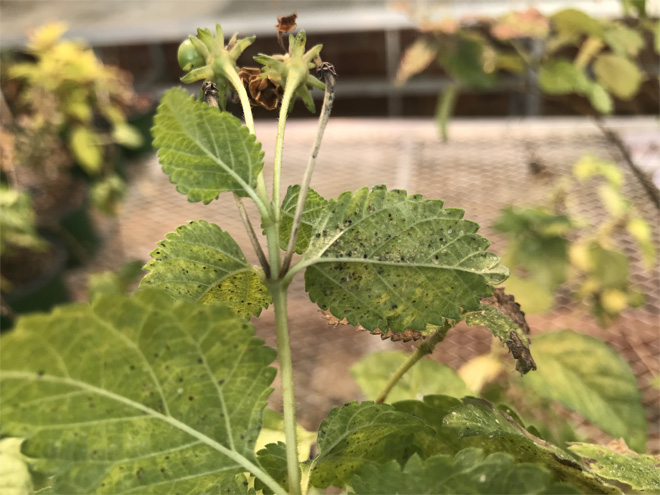
Figure 7. Developing nymphs of silverleaf whitefly causing damage to host plants.
Photo: Shimat V. Joseph.
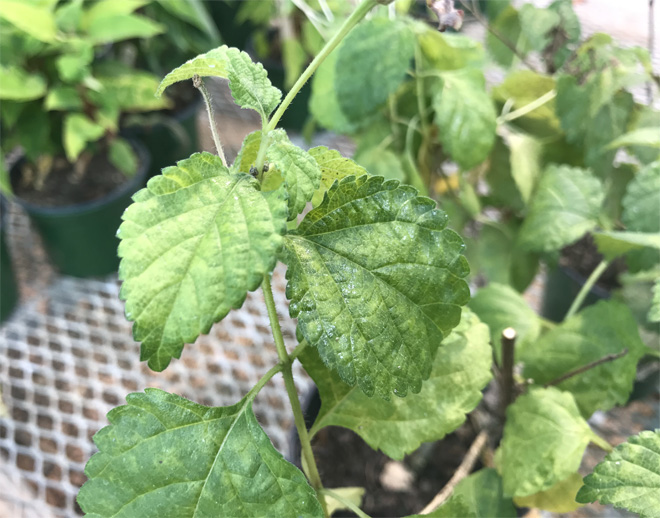
Figure 8. Yellowing of leaves caused by silverleaf whiteflies feeding on lantana.
Photo: Shimat V. Joseph.
Host Plants
The sweet potato whitefly is polyphagous and can infest and consume plants from multiple families. More than 500 plant species, ranging from ornamentals to vegetables, are potential hosts for silverleaf whiteflies. In nursery or greenhouse production, silverleaf whiteflies often are found on poinsettias (Euphorbia pulcherrima), begonias (Begonia x semperflorens-cultorum), hibiscus (Hibiscus rosa-sinensis), gerberas (Gerbera jamesonii), lantanas (Lantana camara), verbenas (Verbena bonariensis), chrysanthemums (Chrysanthemum morifolium), salvias (Salvia officinalis), roses (Rosa spp.), rhododendrons (Rhododendron ferrugineum), and sweetgums (Liquidambar styraciflua).
Monitoring and Management
In nurseries, whitefly infestations are a persistent problem as infested plants are continuously introduced. Preventing the introduction of whitefly-infested plants to the nursery should be the primary strategy for effective whitefly management. To do this, regular inspections and immediate insecticide applications are necessary to protect plants from whitefly introductions once infested plants are detected in the facility. Isolating newly introduced plant stock for 1 to 2 weeks before planting also can reduce infestations among nursery plants. Whiteflies are particularly attracted to plants that are at bloom, especially those with yellow flowers. Regularly monitoring plants and physically removing infested leaves can reduce the whitefly population. The prompt removal of plant residues and weeds from the nursery may help reduce the number of whitefly nymphs and pupae. Whiteflies can be monitored by deploying yellow sticky cards at canopy height. If whiteflies are found on the plant, it is critical to check for them on the undersides of leaves.
Many biological agents can control whitefly populations. Beneficial insects can effectively feed on whitefly eggs and nymphs. These include lacewing (Neuroptera: Chrysopidae or Hemerobiidae) larvae, adult and nymphs of minute pirate bugs (Hemiptera: Anthocoridae), and lady beetles (Coleoptera: Coccinellidae). Parasitoids, such as Eretmocerus eremicus (Hymenoptera: Aphelinidae), are effective in controlling silverleaf whiteflies in greenhouses. Predatory beetles, such as Delphastus catalinae (Coleoptera: Coccinellidae), consume eggs and nymphs.
Insecticides are an effective tool for whitefly control in nurseries and landscapes. Because whiteflies infest the undersurfaces of leaves, adequate insecticide coverage or use of translaminar products that move across the leaf blade are essential. Many contact and systemic insecticides are effective against whiteflies, including organophosphates (such as acephate and malathion), neonicotinoids (such as imidacloprid and dinotefuran), pyrethroids (such as cyfluthrin and bifenthrin), and insect growth regulators (such as pyriproxyfen and buprofezin). Biorational insecticides such as insecticidal soaps, horticultural oils, neem oil, and petroleum-based oils also can effectively control whiteflies.
Whitefly populations can successfully be controlled with 4 to 5 applications at 5- to 7-day intervals. To delay insecticide resistance, rotate through insecticides with distinctly different modes of action. Refer to the Insecticide Resistance Action Committee website (https://irac-online.org/modes-of-action/) as a guide to determine insecticide class, and select insecticides from different category numbers (classes) for back-toback sprays. Carefully read the insecticide label before application because the label is the law! Contact your nearest county Extension office for the latest insecticide recommendations for whitefly control in nurseries and greenhouses by calling 1-800-ASK-UGA1.
References
Barrett, B. A. (2010). Managing whiteflies on indoor and outdoor plants (Publication No. g7275). University of Missouri Extension. https://extension.missouri.edu/publications/g7275
Buss, E. A., Mannion, C. M., Osborne, L.S., & Dale, A. (2017). Managing whiteflies on landscape ornamentals (Publication No. ENY317/MG254). University of Florida IFAS Extension. https://doi.org/10.32473/edis-mg254-2017
Hoddle, M. (n.d.). Silverleaf whitefly: The biology and management of the silverleaf whitefly, Bemisia argentifolii Bellows and Perring (Homoptera: Aleyrodidae) on greenhouse grown ornamentals. University of California Riverside College of Natural & Agricultural Sciences. http://biocontrol.ucr.edu/bemisia.html
Osborne, L. S., & Landa, Z. (1992). Biological control of whiteflies with entomopathogenic fungi. Florida Entomol., 75(4), 456–471. https://doi.org/10.2307/3496127
Sani, I., Ismail, S. I., Abdullah, S., Jalinas, J., Jamian, S., & Saad, N. (2020). A review of the biology and control of whitefly, Bemisia tabaci (Hemiptera: Aleyrodidae), with special reference to biological control using entomopathogenic fungi. Insects, 11(9), 619. https://doi.org/10.3390/insects11090619
Schlaeger, S., Pickett, J. A., & Birkett, M. A. (2018). Prospects for management of whitefly using plant semiochemicals, compared with related pests. Pest Manag. Sci., 74(11), 2405–2411. https://doi.org/10.1002/ps.5058
van Iersel, M. W., Oetting, R. D., & Hall, D. B. (2000). Imidacloprid applications by subirrigation for control of silverleaf whitefly (Homoptera: Aleyrodidae) on poinsettia. J. Econ. Entomol., 93(3), 813–819. https://doi.org/10.1603/0022-0493-93.3.813
